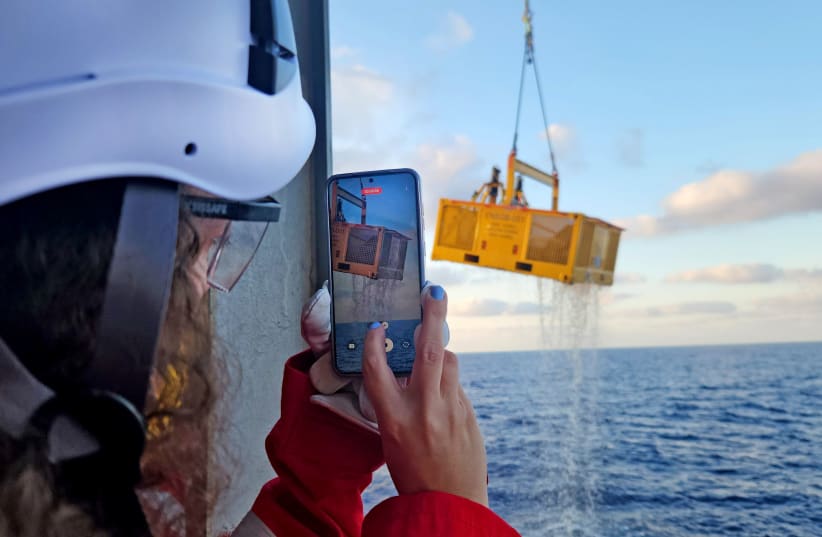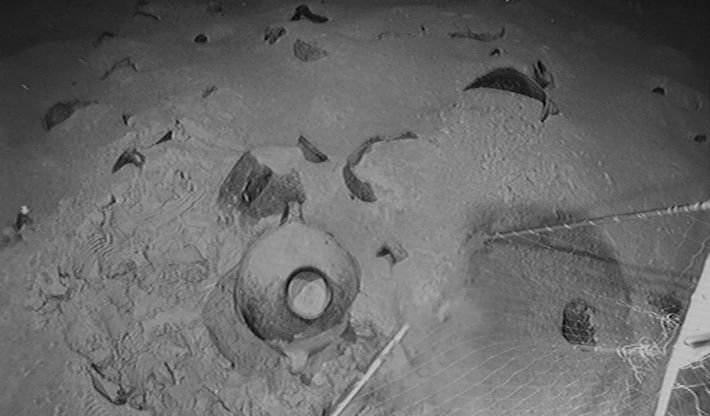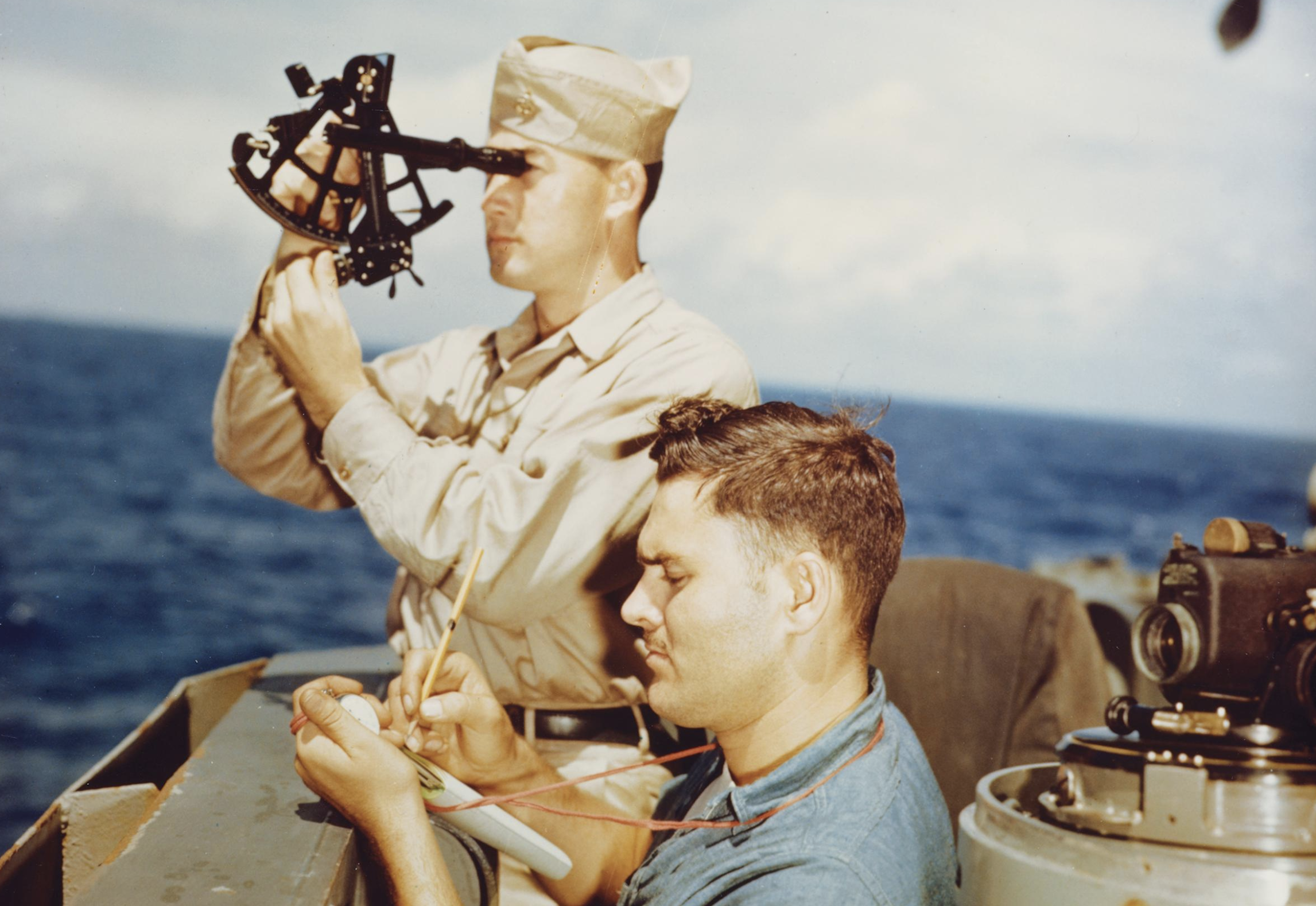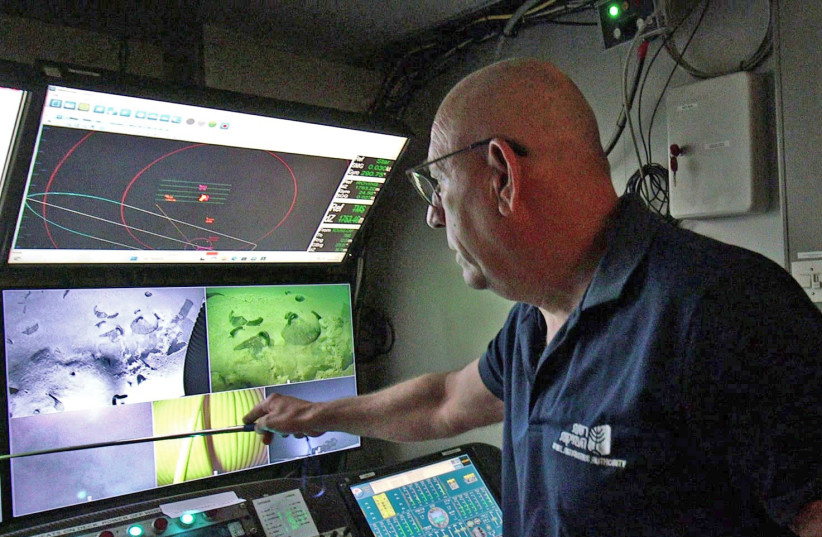
The moments when the jugs come out of the water in a special basket built in their honor. (Photo credit: Emil Eljam)
A 3,300-year-old cargo with hundreds of ancient pots was discovered 60 miles off the coast of Israel in the Mediterranean Sea. Antiquities researchers say this is the world’s most ancient ship to be found in the world in the deep seas, proving that ancient mariners possessed ancient tech and wisdom to traverse the sea without a line of sight to the coast.


Sunken ship and ancient amphorae on the sea floor off Israel’s coast
The ship’s cargo was found during a standard seafloor sweep by the natural gas company Energean, operating in the East Mediterranean – and now working with Israel’s Antiquities Authority to physically extract and bring up sample vessels from the ship. The contents were positively identified as Late Bronze Age Canaanite storage vessels.
Energean -a leading E&P natural gas company operates the Karish, Karish North, Katlan and Tanin offshore natural gas fields near Israel.
“The ship seems to have sunk in crisis, either due to a storm or to an attempted piracy attack – a well-known occurrence in the Late Bronze Age,” says Jacob Sharvit, Head of the Israel Antiquities Authority Marine Unit.
“This is a world-class history-changing discovery: This find reveals to us as never before the ancient mariners’ navigational skills – capable of traversing the Mediterranean Sea without a line of sight to any coast. From this geographical point, only the horizon is visible all around. To navigate they probably used the celestial bodies, by taking sightings and angles of the sun and star positions,” he says.

Ancient civilizations like the Egyptians, Minoans, Mesopotamians, Greeks, and Vikings relied on the stars for navigation. By observing the movements of specific stars and constellations, early navigators were able to estimate their latitude and navigate along the coastlines and rivers.

A quartermaster takes a sun sighting from the navigation bridge of the USS Alaska in 1945. U.S. NAVAL INSTITUTE PHOTO ARCHIVE
“It turned out to be a sensational discovery, far beyond what we could imagine,” says Karnit Bahartan, Environmental Lead at Energean.
The company’s technicians planned a unique, complex operation and even built a special tool to enable extracting artifacts with minimal risk of damage to the entire assemblage.
A robot sent to investigate estimates the ship is about 14 yards long. The muddy bottom conceals a second layer of vessels, and it seems that wooden beams of the ship are also buried within the mud, say the researchers.

The discovery of this boat now changes the understanding of ancient mariner abilities: It is the very first to be found at such a great distance with no line of sight to any landmass.
“The vessel type identified in the cargo was designed as the most efficient means of transporting relatively cheap and mass-produced products such as oil, wine and other agricultural products such as fruit. Finding such a great quantity of amphorae on board one single ship is testimony to significant commercial ties between their country of origin and the ancient Near Eastern lands on the Mediterranean coast,” Shavit adds.
Only two other shipwrecks with cargo are known from the Late Bronze Age in the Mediterranean Sea – the boat from Cape Gelidonya and the Uluburun boat; both found off the Turkish coast. Yet both of those shipwrecks were found relatively near the shore, and were accessible using normal diving equipment.

Photos collected from the ancient ship underwater
Based on these two finds, the academic assumption until now was that trade in that time was executed by safely flitting from port to port, hugging the coastline within eye contact. The discovery of this boat now changes the understanding of ancient mariner abilities: It is the very first to be found at such a great distance with no line of sight to any landmass.
Energean (LSE:ENOG, FTSE 250, TASE:אנאג, TA-35) is a London-based independent E&P company focused on developing resources in the Mediterranean. The multi country 1bn+ boe portfolio is 80% gas weighted, producing up to 150k boepd. Energean is committed to sustainable development and to be a net zero emitter by 2050.





